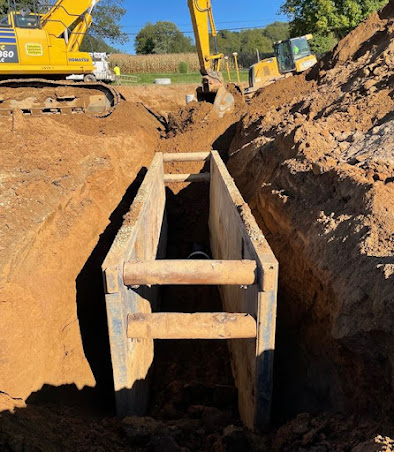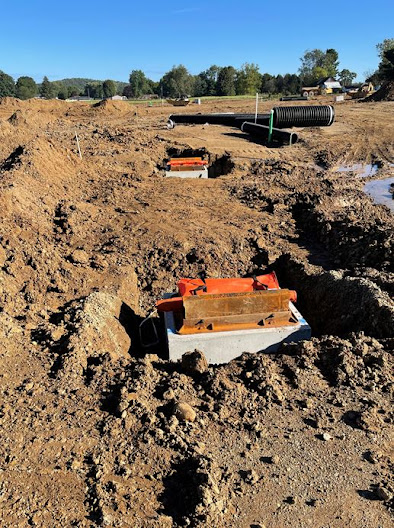.............................of a sub-division: Episode 11
Storm water management.
One of the principles of development is that storm water cannot leave your property any faster after the development is completed than it did before the development occurred. Call it storm water management. In our case, we collect the water from the development and direct it to a storm water basin, also potentially known as a pond. The word potentially is included primarily because it was our hope that the basin would not hold water permanently, that the water would percolate through the sand and gravel soil and disappear after a brief spell. Early returns indicate it may become a pond. Also in our case, the nice folks at the City Engineer's office believe that our site is the recipient of a fair amount of water coming off the hillsides on the opposite side of Horns Hill Road. Even though this runoff comes not from our land, we still have to account for it. So we did.
There is a logical sequence to the development process. You start with the deepest pipes, the sanitary sewer, then move to the next deepest pipes, the storm sewer. Both of these systems rely on gravity. Elevations matter.
 |
| The storm water basin |
 |
| Laying some big pipe to catch the storm water coming from the hillside across Horns Hill Road |
 |
| Bedding said pipe with gravel |
 |
| Connecting the storm pipe to a storm structure (manhole) |
 |
| Ditto |
 |
| Laying some deeper storm pipe. Box required for safety |
 |
| ditto |
 |
| Your basic storm structure. Inlets and outlet |
 |
| Street storm water inlet |
 |
| Two street storm inlets waiting patiently for the street |
 |
| Main outlet for storm water coming off the hillside on the other side of Horns Hill Road to flow into our basin |
 |
| Different view of the same |
 |
| The storm basin will allow water to flow towards the North Fork of the Licking River. This is the outlet at the lower edge of the basin |
 |
| This pipe offers the only outlet for storm water leaving our development. |



No comments:
Post a Comment